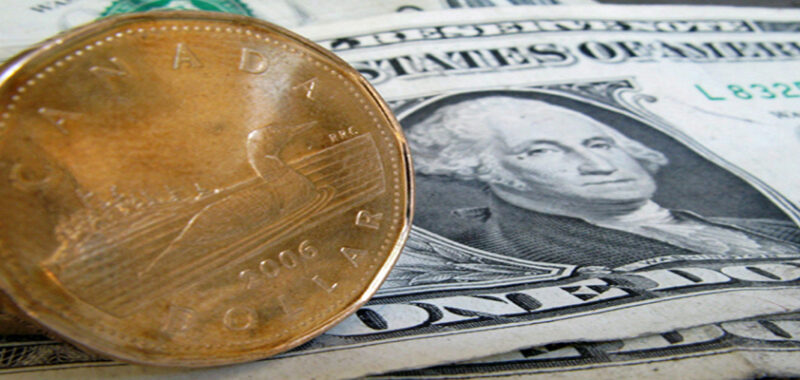– Bank of Japan leaves rates unchanged-blames tariff uncertainty.
– S&P 500 futures soar in holiday-thinned markets
– US dollar grinds higher
USDCAD: open 1.3823, overnight range 1.3784-1.3825, close 1.3801, WTI 56.70, Gold 3218.69
The Canadian dollar gave back some of yesterday’s gains after the US caught a bid in overnight markets
Yesterday Statistics Canada reported that March GDP contracted by -0.2% m/m, even though forecasts called for a flat reading. The sting of that data was soothed by the projection of a 0.1% rebound in April. Even so, that estimate may be optimistic, especially since the full effect of US tariffs has yet to materialize.
The Canadian dollar is vulnerable to the ever-changing tone of US economic headlines. Sentiment continues to be driven by Trump’s self-congratulatory posts about progress with China trade negotiations, which Beijing officials have publicly denied.
WTI traded in a 56.83-58.47 range and fell sharply due to concerns about rising Iranian and Kazakh output, and speculation that Saudi Arabia will push for another production increase at OPEC’s May 5 meeting. The drop overshadowed the latest EIA report showing US crude stocks fell by 2.69 million barrels.
EURUSD traded in a 1.1288-1.1333 range in subdued trading as most of the eurozone was closed for Labour Day festivities. The single currency managed to claw back some earlier losses, but downside pressure persists while prices stay below 1.1370, with support eyed at 1.1250.
GBPUSD firmed in a 1.3275-1.3333 band and extended gains into the New York open, supported by optimism over potential US-UK trade discussions. Although UK Manufacturing PMI ticked up to 45.4 in April from 44.0, the underlying tone was gloomy, with S&P Global noting the sharpest drop in export orders in nearly five years, particularly from the US, EU, and China.
USDJPY ranged between 142.88 and 144.74 as the Bank of Japan left rates at 0.5%, in line with expectations. The central bank’s decision to lower its GDP outlook for 2025 and 2026 weighed on the yen. Projections were trimmed due to trade policy uncertainty, particularly related to US tariffs. Inflation forecasts, however, were left relatively firm.
AUDUSD moved within a 0.6375-0.6427 band and drifted lower due to US dollar strength. Sentiment was barely lifted by news that Australia’s trade surplus jumped to $6.9 billion in March from $2.85 billion, thanks largely to a rebound in exports to China.
Todays US data includes weekly jobless claims and ISM manufacturing PMI.

